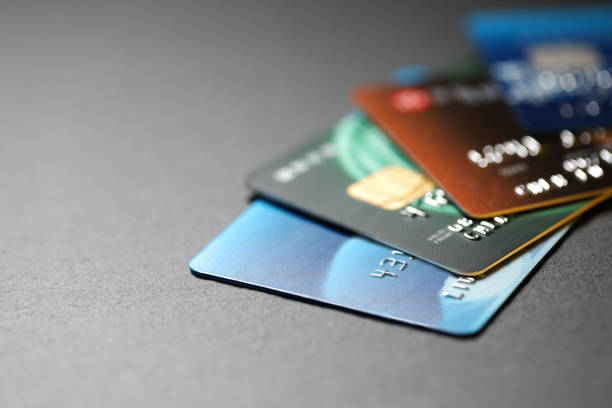Hey there, finance enthusiasts! Today, I want to have a real, no-nonsense chat about something that many of us tiptoe around—credit card debt. Have you ever swiped your card for a fancy gadget or a last-minute trip, only to feel a pang of regret when the bill arrives? Yeah, I’ve been there too. And in today’s ever-evolving financial world, knowing smart ways to pay off credit card debt in India is more important than ever. With new RBI regulations, digital payment trends, and the rise of fintech solutions in 2025, tackling your credit card bills has become both more manageable and, honestly, a bit more complicated.
Let’s break it down together, like we’re sitting over coffee and hashing out strategies that actually work.

Breaking Free from the Credit Card Debt Trap
Credit card debt can feel like a heavy backpack you didn’t sign up for. One swipe here, one missed payment there, and suddenly, the interest snowball grows faster than you can imagine. But don’t worry—I’ve got six strategies that can help you regain control of your finances.
1. Break Your Investments and Pay the Bill
I know, I know—this sounds scary. The thought of touching your hard-earned investments can feel like sacrilege. But sometimes, the quickest way to breathe again is to liquidate short-term investments like fixed deposits, liquid mutual funds, or recurring deposits to clear high-interest credit card debt.
Here’s the math: most credit cards charge anywhere between 36–48% annual interest. Compare that to a fixed deposit offering 6–7%—the choice is clear. By paying off debt first, you save way more in interest than you’d earn by leaving your money parked.
A personal story: I once hesitated to break a small FD to clear a looming credit card bill. The late fees were piling up, and my sleep was suffering. Once I paid it off, the relief was tangible. I literally felt the weight lift off my shoulders. And trust me, that feeling? Priceless.
2. Pay Off the Debt in Installments
Minimum payments are the sneaky trap everyone falls into. Paying only the minimum each month can stretch your debt for years. The smart move? Commit to paying at least 3–4 times the minimum, or as much as your budget allows.
Breaking it down: if your card shows a ₹50,000 balance and the minimum is ₹2,500, paying just ₹2,500 could take years to clear the debt because of compounding interest. But if you pay ₹10,000 monthly, you drastically reduce interest and become debt-free faster.
Here’s a modern tip for 2025: use mobile apps like Walnut, MoneyView, or even your bank’s personal finance tracker to automate installment payments. Seeing your balance drop daily is oddly satisfying—like watching a suspense thriller where you’re rooting for yourself.
3. Seek Support from Friends or Family
Asking for help can be awkward, but sometimes it’s necessary. If you have a trustworthy circle, borrowing from a friend or family member can save you from high-interest rates. Just remember two things:
- Be transparent about repayment timelines.
- Treat it like a formal loan to avoid straining relationships.
Anecdote alert: I once borrowed a small amount from a cousin to pay off an urgent credit card bill. We drew up a simple repayment schedule. Not only did I clear the debt, but I also strengthened our bond because of the clarity and trust involved.
4. Opt for a Personal Loan
If family isn’t an option, a personal loan can be a lifesaver. Today, in 2025, banks and fintech lenders offer personal loans at rates as low as 10–12%—way lower than your credit card’s 36–48%. This allows you to consolidate debt and have a fixed repayment schedule.
Pro tip: compare options on platforms like BankBazaar, Paisabazaar, or even direct bank portals. Check the processing fee, prepayment charges, and the loan tenure. The goal is simple: pay off credit card debt fast without creating another financial headache.
5. Convert to EMI
Many banks now allow you to convert your outstanding credit card balance into EMIs. This is especially handy for large purchases or when your monthly budget is tight.
Why it works: instead of staring at a massive bill, you pay in smaller, predictable chunks over a few months. Some banks even offer zero-interest EMI options if paid within the tenure.
A quick anecdote: I once bought a laptop on a credit card and converted the ₹70,000 bill into a 12-month EMI plan. The monthly deduction was manageable, and I avoided extra debt stress. Small steps like this keep you sane while still enjoying life’s perks.
6. Utilize Credit Card Balance Transfer
Balance transfer is your secret weapon if used wisely. Most banks offer low-interest or even 0% introductory rates for transferring your existing balance to a new card.
Important 2025 update: RBI now mandates clear disclosure of processing fees and interest rates for balance transfers, so you won’t get unpleasant surprises.
Tips for success:
- Compare processing fees across banks.
- Have a repayment plan before the intro period ends.
- Avoid spending on the new card until the old debt is cleared.
Think of it as moving a boulder from a steep hill to a gentle slope—less strain, more control.
Using Credit Cards Wisely in 2025
Clearing debt is one thing; avoiding it is another. Here’s how to handle your plastic money smartly today:
- Set a budget: Track monthly expenses and categorize spends. Apps like ET Money or FinTrack help a ton.
- Pay bills on time: Avoid late fees and high-interest charges. Automatic reminders are a lifesaver.
- Review statements: Catch unauthorized transactions early—fraudulent charges are still a real concern.
- Use rewards smartly: Cashback and reward points are great, but don’t overspend just to earn them.
- Stay updated with RBI rules: Recent 2025 guidelines cap some interest rates and make transparency mandatory—knowledge is power!
Final Thoughts: Financial Freedom Is Possible
Managing credit card debt might feel overwhelming, but with smart ways to pay off credit card debt in India, it’s totally doable. Remember, the goal isn’t just paying off debt—it’s reclaiming peace of mind and building a healthier relationship with your finances.
Have you tried any of these strategies? Or maybe you’ve got a hack that worked wonders for you? Drop your experiences in the comments—I’d love to hear your stories.
At the end of the day, financial well-being is a journey, not a sprint. With informed choices, a bit of planning, and staying updated on 2025 trends, you can take charge of your credit cards rather than letting them control you.

